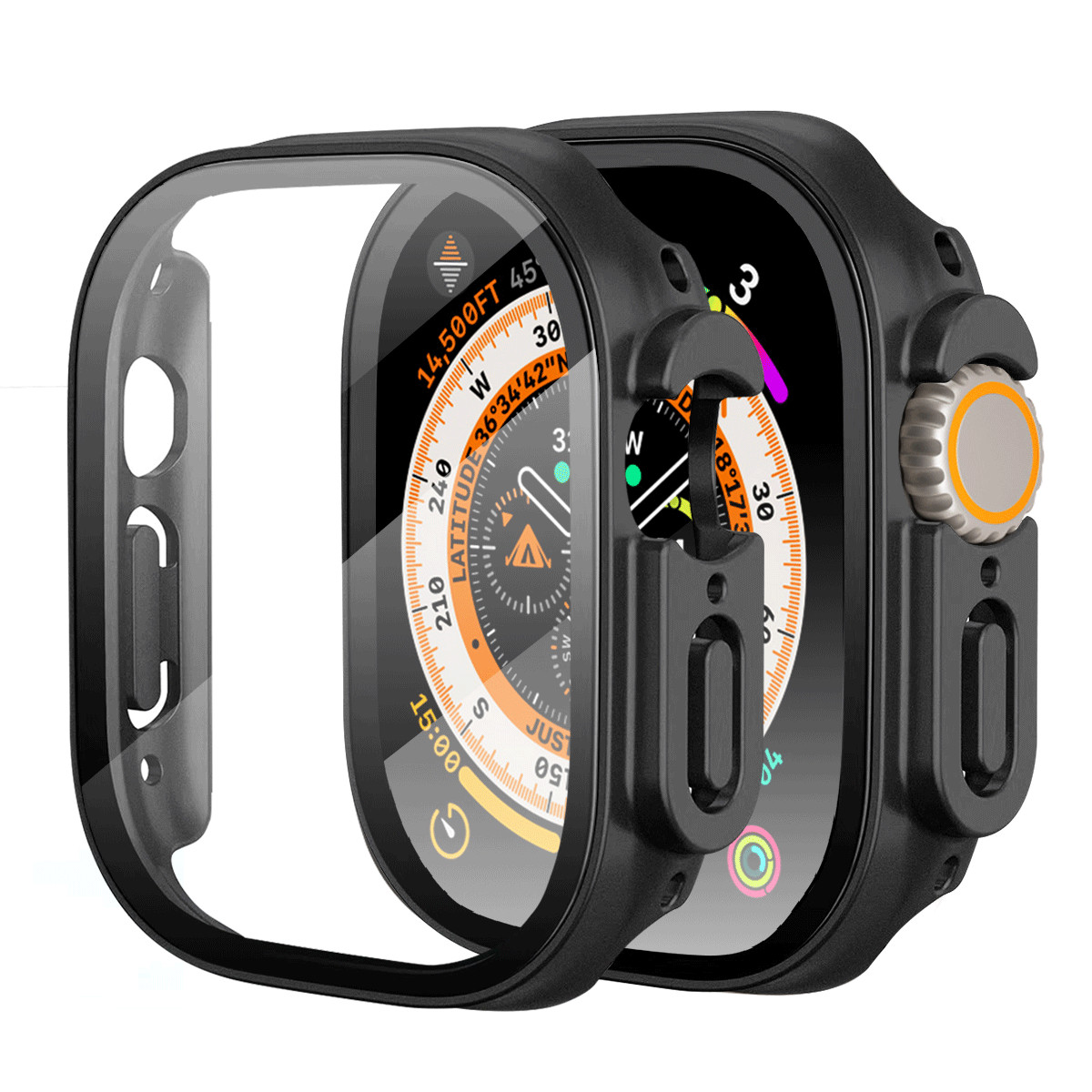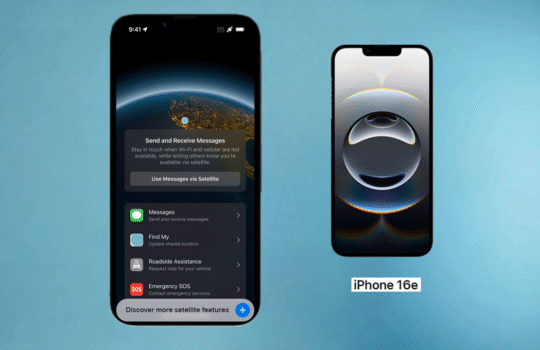Why the iPhone Air Moment Matters: What We Saw, What We Missed, and Why Apple’s Future Hangs in the Balance

"Unveiling the iPhone Air: A Game-Changing Moment for Apple and the Tech Industry"
In the ever-evolving world of technology, some moments reshape the course of innovation, challenging us to redefine what is possible. Apple’s latest release, the iPhone Air, has captured our imagination and sparked a fervent debate about its impact on the future of tech. As we dissect what we saw and reflect on what we missed, the stakes couldn’t be higher – Apple’s future hangs in the air.
Join us on a thrilling journey as we delve deep into the significance of the iPhone Air moment. From its groundbreaking features to the untapped potential it holds, we will explore why this innovation matters more than ever before. Get ready to be inspired, enlightened, and emboldened as we uncover the key insights that will shape Apple’s destiny. The stage is set, the stakes are high – let’s embark on this exhilarating exploration together.
-
Apple iPhone 14 Pro Max 128GB Network Unlocked Very Good Condition
— $436.13
$1,099.00 - 2025 Apple iPad Air 11-inch M3 Chip 128GB Wi-Fi Space Gray MC9W4LL/A — $479.00
-
Apple Watch Ultra 2 (GPS + LTE) 49MM Titanium Case Orange/Beige Trail Loop
— $479.95
$799.00 -
Apple iPhone 14 Pro Max 512GB Unlocked Very Good Condition
— $486.50
$1,399.00 - Open Box – Apple Watch Ultra 2 49mm Titanium Case Ocean Band – Orange – Grade A — $499.99
📱 Opening Scene: The Sound of a Thin Phone and a Crowd That’s Already Sighing
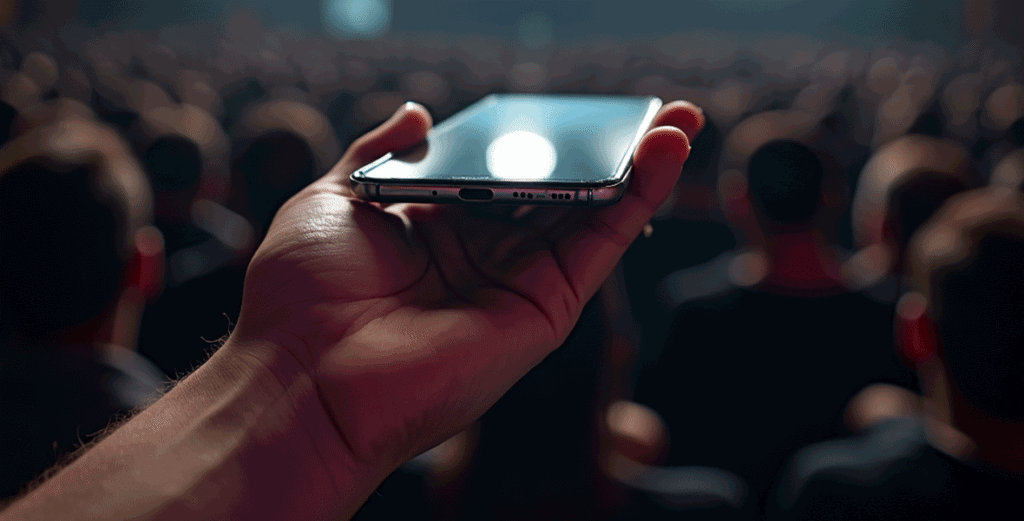
Depending on your age, can you remember the smell of fresh coffee in the green room, the little hiss of camera lenses focusing, and the metallic click when a demo unit slid across the stage? The lights were too bright, and there was a faint scent of citrus from a sponsor’s hand sanitizer. We felt the cool glass and whisper-thin aluminium of the new device in our palm, and it felt like holding a sheet of paper—beautiful, dangerously delicate, and almost too light to believe.
That sensory jolt is why the launch mattered. We recorded everything and published a video about the moment Apple introduced what they called the iPhone Air. In that piece, we tried to explain not just the specs but the strange emotional moment that unfolded: applause mixed with confusion, wonder mixed with a growing sense that something else was missing. Throughout this article, we’ll keep returning to that moment—the feel of the new iPhone Air in our hands—and ask the question we can’t stop repeating: is this a triumph of refinement, or proof that Apple missed the point?
-
Apple iPhone 14 Pro Max 128GB Network Unlocked Very Good Condition
— $436.13
$1,099.00 - 2025 Apple iPad Air 11-inch M3 Chip 128GB Wi-Fi Space Gray MC9W4LL/A — $479.00
-
Apple Watch Ultra 2 (GPS + LTE) 49MM Titanium Case Orange/Beige Trail Loop
— $479.95
$799.00 -
Apple iPhone 14 Pro Max 512GB Unlocked Very Good Condition
— $486.50
$1,399.00 - Open Box – Apple Watch Ultra 2 49mm Titanium Case Ocean Band – Orange – Grade A — $499.99
🔍 The Phone Air Itself: Thinner, Faster, and Why That’s Not Enough

We’ll start with the obvious: the iPhone’s Air is impressively thin. At 5.5 millimeters, it’s the thinnest handset Apple has ever released. It glides out of the box like a promise—sleek, precise, and glossy. But the first time we held the iPhone Air, we asked ourselves, aloud and to one another, “Who actually asked for this?”
In the world of consumer electronics, thinner usually equals better—at least in marketing slides. But thinness comes at trade-offs. The iPhone Air’s battery life became the talk of the lobby within minutes: Apple stated “all-day battery life,” which, in practice, meant a little less than last year’s models. That’s a sentence that reads like a consolation prize when you’re proud of a physical achievement (5.5 millimeters!), but the lived reality of users is more prosaic: will it last a day under heavy use? Will it survive a weekend away without the constant hunt for an outlet?
- For Apple Watch Series Ultra 3 11 10 9 8 7 iWatch 49mm Silicone Sport Band Strap — $7.85
- Nylon Strap Band For iWatch Apple Watch Series 11 10 9 8 7 SE Ultra 3 38mm- 49mm — $7.99
- Genuine Leather Band iwatch Strap For Apple Watch Series Ultra 3 11 10 9 8 7 SE — $8.90
- For iPhone 17 Air 16 15 14 13 12 11 Pro Max Protective Shockproof Rugged Case — $8.98
- For For iPhone 17 Pro Max 17 Air Case Shockproof Phone Cover + Tempered Glass — $8.99
We tried to simulate real life with the iPhone Air: on public transit, with maps running, streaming music, doing a few hasty edits to a document, answering messages while checking notifications. The device was lovely to hold—cold, almost knife-edge in the best possible way—but there was a constant worry that the next tap or the next photo could demand a battery top-up.
Image suggestion: A tactile close-up image of a hand holding a very thin smartphone over a café table, a cup of coffee, and a pair of earbuds in the background.
🔋 Battery Trade-Offs and the $99 MagSafe Compromise

There’s an irony we couldn’t ignore: Apple markets elegance and simplicity, and yet it also introduced a MagSafe battery back specifically for the iPhone Air—sold separately for $99. It’s like being invited to a minimalist retreat and then learning you’ll have to purchase a carry-on bag to get through the door.
We talked about this repeatedly in our coverage: the iPhone Air is so proud of its thinness that it sacrifices a bit of stamina. The MagSafe battery back is a neat accessory—magnetic, efficient, and engineered to match the iPhone Air’s profile—but it’s also a tacit admission that the device’s core selling point (thinness) comes at a real cost. When elegance requires add-ons, it becomes less about pure form and more about compromise.
- Luxury Leather Apple Watch Band Strap for iWatch Series 11 10 9 8 7 6 SE Ultra 3 — $9.99
- Full Case Cover for Apple Watch Ultra 3 2 49mm Tempered Glass Screen Protector — $9.99
- For iPhone 17 Pro Max Case 17 Air Clip Phone Cover Fit OtterBox +Tempered Glass — $12.99
-
Case For Apple iPhone 17 Pro Max 17 Pro 17 Air 17 Shockproof Cover Defender
— $14.99
$19.99 - iPhone Air Case – elago® iPhone Air MagSafe Silicone Case — $17.99
⌚ Watches, Translations, and the Problem of Competitive Context

We don’t want to ignore the new Apple Watches. The Series 11 and the Ultra got their upgrades: Series 11 with about 24 hours of battery life, and the Ultra stretching to 42 hours. Those numbers sound fine—until we compare them to Garmin watches that last for weeks. This isn’t apples-to-apples, as we often remind ourselves: Apple targets a mainstream audience, not expedition mountaineers. But the comparison is still instructive.
- Genuine Leather Band iwatch Strap For Apple Watch Series Ultra 3 11 10 9 8 7 SE — $8.90
- For iPhone 17 Air 16 15 14 13 12 11 Pro Max Protective Shockproof Rugged Case — $8.98
- For For iPhone 17 Pro Max 17 Air Case Shockproof Phone Cover + Tempered Glass — $8.99
- For iPhone 17 16 15 14 13 12 Pro Max Air Frost Case Mag Safe Shockproof Cover — $9.98
- Luxury Leather Apple Watch Band Strap for iWatch Series 11 10 9 8 7 6 SE Ultra 3 — $9.99
Part of the problem we noticed is context. When we present the iPhone Air or the newest Apple Watch, we inevitably measure them against competing narratives and competing technologies. Other companies are defining themselves through AI features that promise new ways of living with devices. Apple gave us hardware upgrades and a few interesting software tricks—like live translation—but the broader conversation has shifted. The iPhone Air is shiny, but the conversation in many rooms is no longer about thickness or camera bump design; it’s about whether the device is smart in the way we now expect “smart” to be.
🤖 Apple’s AI: A Deliberate Retreat or a Self-Inflicted Handicap?
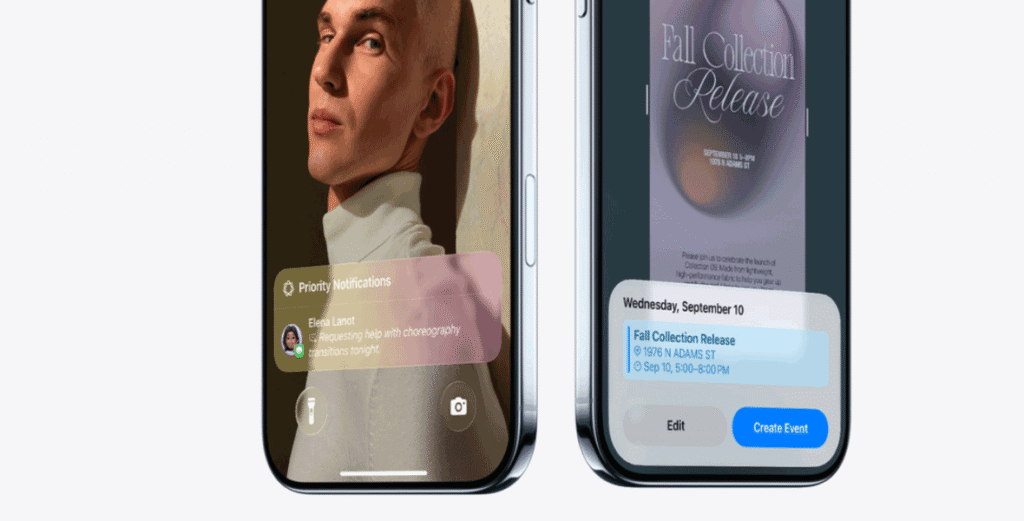
Now we come to the central tension of this entire story. While everyone else in tech sprinted toward AI, Apple took a stroll—and not just any stroll, but a careful, guarded walk behind velvet ropes. We saw a hybrid AI strategy emerge: part on-device, part in the cloud. Lightweight models run locally for quick tasks, while heavier computation takes place in Apple’s servers. On paper, this looks like privacy-first engineering: Apple promised that even its servers would avoid exposing user data. In practice, however, the reality is messier.
- Metal Case For iPhone 17 Pro Max Air 17 Heavy Duty Shockproof Rugged Hard Cover — $18.99
- Ringke [Onyx] For iPhone 17 Pro Max / 17 Pro / 17 / Air Non-Slip Rugged Case — $18.99
- For iPhone 17 / Air | Spigen Ultra Hybrid MagFit Phone Case — $19.99
- For iPhone Air | Ringke [Fusion Magnetic] Shockproof Clear MagSafe Case — $23.99
- For iPhone 17 Pro Max / Pro / Air | Spigen [GLAS.tR EZFIT] Screen Protector — $34.99
When we tested the new Apple Intelligence features that rolled out, we found the experience uneven. Tasks that required simple rewriting or local context were fine. Anything more ambitious—and we mean conversational depth, long-form synthesis, or complex reasoning—handed us off to external models like ChatGPT. That handoff is the story nobody wanted to hear: if you want a real conversation or serious creativity, Apple’s models aren’t yet the ones to trust. We asked the phone air several probing questions about travel plans, draft emails, and translation with contextual nuance. At a certain point, the iPhone Air’s replies folded in ChatGPT’s language and stylistic tendencies.
⚠️ The ChatGPT Integration and the Privacy Dilemma

This is where the headlines got loud. Apple, a company that built much of its brand on privacy, quietly built a bridge to OpenAI inside its AI stack. It’s an admission that Apple’s own models don’t yet compete with the leading conversational engines. For us, as people who have been tracking this shift for months, this was significant: the phone air didn’t just reveal a new product—it revealed an uneasy compromise.
We remember the reaction: investors nervously watching, some users suspicious, and privacy advocates uneasy. The idea that Apple would route higher-level requests through third-party infrastructure—especially one tied to a figure like Sam Altman—created a cognitive dissonance. Apple’s reassurance that data would be handled “safely” didn’t convince everyone. The specter of uncertainty over who sees what is enough to change user behavior. We found that even loyal fans reached for clarifying questions like, “What does this mean for my messages? For my health data? For my financial details?”
- Apple Watch Serie 5 Hermes — $200.00
-
Apple iPad Air 10.9" 4th Gen 2020, 64GB, Wi-Fi – GOOD – 1 YEAR WARRANTY
— $229.85
$499.00 - Apple iPad Air 4 (2020) 10.9" 64GB 256GB All Colors (WiFi or Cellular) – Used — $255.99
-
Apple iPhone 14 Pro Max 128GB Network Unlocked Very Good Condition
— $436.13
$1,099.00 - 2025 Apple iPad Air 11-inch M3 Chip 128GB Wi-Fi Space Gray MC9W4LL/A — $479.00
📜 Copyright Lawsuits and the Ethics of Training Data
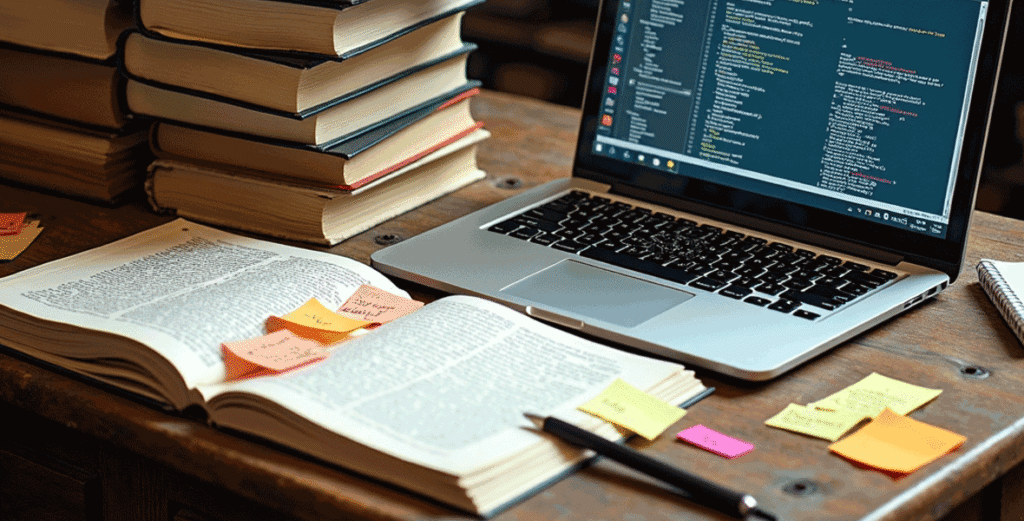
The complexity deepened when we learned that authors had filed lawsuits alleging Apple used copyrighted books to train its models without permission. The narratives here are conflicting: Apple published papers saying it used licensed and ethical datasets. The lawsuit claims otherwise. To us, it sounded like a classic tech-era contradiction: to build competitive AI systems you need massive data—sometimes data that’s messy, sometimes data that’s scraped without clear permission.
-
Apple iPhone 16 Pro Max 256GB Unlocked Very Good Condition
— $805.99
$1,161.81 - Apple iPhone 16 Pro Max 256GB Unlocked AT&T T-Mobile Verizon Very Good Condition — $817.95
-
Apple Watch Ultra 2 [GPS + Cellular 49mm] Smartwatch with Rugged Titanium Case &
— $834.95
$1,294.99 - Apple iPhone 16 Pro Max 256GB Unlocked Excellent Condition – All Colors — $849.99
- Apple iPhone 16 Pro Max 512GB Unlocked AT&T T-Mobile Verizon Very Good Condition — $873.95
In our conversations about the phone air, we kept returning to a pattern: Apple promises a moral high ground in data practices, which looks great in marketing videos, but the reality of building effective models often runs straight into that moral high ground. If Apple’s models are to be truly competitive, they need huge corpuses of text, and if acquiring them requires dealing with gray-market datasets, Apple faces a painful choice: stick to idealistic data principles and stay behind, or compromise and risk legal and PR fallout.
🔒 Secrecy as Strength—and as a Liability

We used to celebrate Apple’s secrecy. It made launches feel magical. Teams were siloed, schedules were tightly controlled, and products arrived finished. That worked beautifully in a hardware-dominated world: fewer leaks, higher spectacle, and a reputation for polish. But the AI era demands a different rhythm: experimentation, community feedback, research papers, and open conversations. Apple’s fortress-like posture looks less charming in a space that rewards openness (or at least the appearance of participation).
-
Apple Watch Ultra 2 (GPS + LTE) 49MM Titanium Case Orange/Beige Trail Loop
— $479.95
$799.00 -
Apple iPhone 14 Pro Max 512GB Unlocked Very Good Condition
— $486.50
$1,399.00 - Open Box – Apple Watch Ultra 2 49mm Titanium Case Ocean Band – Orange – Grade A — $499.99
- Open Box – Apple Watch Ultra 2 49mm Titanium Case Alpine Loop Indigo – Grade A — $499.99
- Apple Watch Ultra 2 49mm GPS + Cell Titanium Case w/ M/L Blue Trail Loop — $509.00
We spoke with insiders who described the mood inside Apple as cautious and, at times, stifling. Top AI researchers left for places where their work would be acknowledged and where the path from experiment to production felt less bureaucratic. That turnover matters. The iPhone Air is a design triumph, but building the AI that makes devices truly transformative requires people who can iterate quickly and experiment publicly
🍯 The iPhone Trap: Why Having the Golden Goose Can Hurt
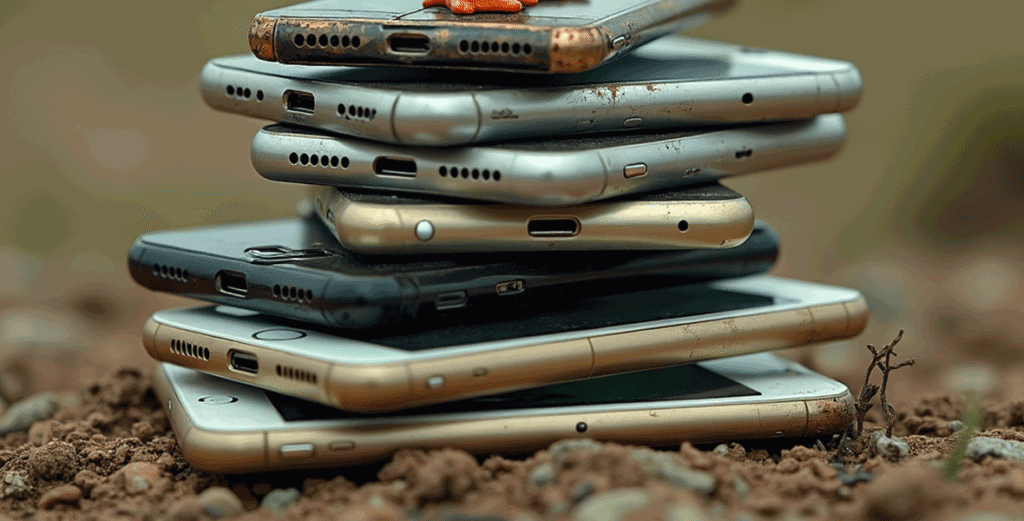
Here’s a paradox that we kept highlighting in our coverage: the iPhone is Apple’s golden goose. It accounts for roughly half of Apple’s revenue and sells nearly 250 million units a year. That kind of success breeds conservatism. When your product line is responsible for that level of profit, your default setting becomes incremental improvement. Investors want predictable returns. Marketing teams prefer reliable refresh cycles. Engineers are told to polish rather than reinvent.
-
Apple Watch Ultra 2 (GPS + LTE) 49MM Titanium Case Orange/Beige Trail Loop
— $479.95
$799.00 -
Apple iPhone 14 Pro Max 512GB Unlocked Very Good Condition
— $486.50
$1,399.00 - Open Box – Apple Watch Ultra 2 49mm Titanium Case Ocean Band – Orange – Grade A — $499.99
- Open Box – Apple Watch Ultra 2 49mm Titanium Case Alpine Loop Indigo – Grade A — $499.99
- Apple Watch Ultra 2 49mm GPS + Cell Titanium Case w/ M/L Blue Trail Loop — $509.00
We think of the iPhone Air as a symptom of this dynamic: a product update that’s safe, glossy, and sells well to people who love the brand. However, dramatic pivots—especially those that would require cannibalizing hardware profits in the short term—become politically fraught within companies of Apple’s size. When the frontier of innovation shifts to software-driven paradigms like AI, that kind of structural inertia can be deadly.
🧭 What If Apple Is Just Playing the Long Game?

We don’t want to be entirely negative. One of the things we argued repeatedly—and still believe—is that Apple has always pursued “arrive-last-but-arrive-best” strategies. The iPod, the iPhone, and the AirPods weren’t the first of their kind, but Apple’s entries dominated markets because of superior integration and user experience. So we must consider the possibility that Apple’s restraint in AI is deliberate.
Tim Cook’s repeated message is instructive: “We will be deliberate and thoughtful.” What if Apple’s delays are not failures but strategic patience? What if they are avoiding AI hype cycles and waiting for meaningful tools that won’t embarrass them at scale? That would align with the company’s longstanding philosophy of prioritizing quality over speed.
-
Apple Watch Ultra 2 (GPS + LTE) 49MM Titanium Case Orange/Beige Trail Loop
— $479.95
$799.00 -
Apple iPhone 14 Pro Max 512GB Unlocked Very Good Condition
— $486.50
$1,399.00 - Open Box – Apple Watch Ultra 2 49mm Titanium Case Ocean Band – Orange – Grade A — $499.99
- Open Box – Apple Watch Ultra 2 49mm Titanium Case Alpine Loop Indigo – Grade A — $499.99
- Apple Watch Ultra 2 49mm GPS + Cell Titanium Case w/ M/L Blue Trail Loop — $509.00
We found evidence that Apple is at least hedging: dedicated on-device models for immediate tasks, cloud-based heavy lifting for complex demands, and an attempt to maintain privacy—at least on paper. If Apple can combine level-headed engineering with robust, defensible privacy mechanisms, it could still leapfrog rivals when the right moment arrives. The iPhone Air could be a facade for a deeper, quieter transformation—if Apple is willing to invest massively and quickly when it decides the time is right.
📉 Is AI an Investor-Fueled Bubble? And Could That Save Apple?

There’s growing chatter—loud chatter—that AI could be an overhyped sector supported by investor fervor rather than sustainable earnings. We documented examples in our video and dug into them while researching this article: companies like Stability AI burning cash, Inflection folding into larger players, and Anthropic spending hundreds of millions annually. We also saw studies indicating that many corporate attempts to use generative AI fail to deliver measurable productivity gains.
-
Apple Watch Ultra 2 (GPS + LTE) 49MM Titanium Case Orange/Beige Trail Loop
— $479.95
$799.00 -
Apple iPhone 14 Pro Max 512GB Unlocked Very Good Condition
— $486.50
$1,399.00 - Open Box – Apple Watch Ultra 2 49mm Titanium Case Ocean Band – Orange – Grade A — $499.99
- Open Box – Apple Watch Ultra 2 49mm Titanium Case Alpine Loop Indigo – Grade A — $499.99
- Apple Watch Ultra 2 49mm GPS + Cell Titanium Case w/ M/L Blue Trail Loop — $509.00
If AI is indeed closer to a bubble than a revolution, then patience is a rational strategy. Apple might emerge as the rational actor, watching the hype burn itself out while accumulating institutional knowledge and waiting for the post-bubble era, when customer expectations stabilize, to bring polished solutions to market. The iPhone Air could then be seen as a company not rushing into a speculative fight it doesn’t have to win yet.
🧪 Evidence of Fragile AI: Where the Models Still Fail
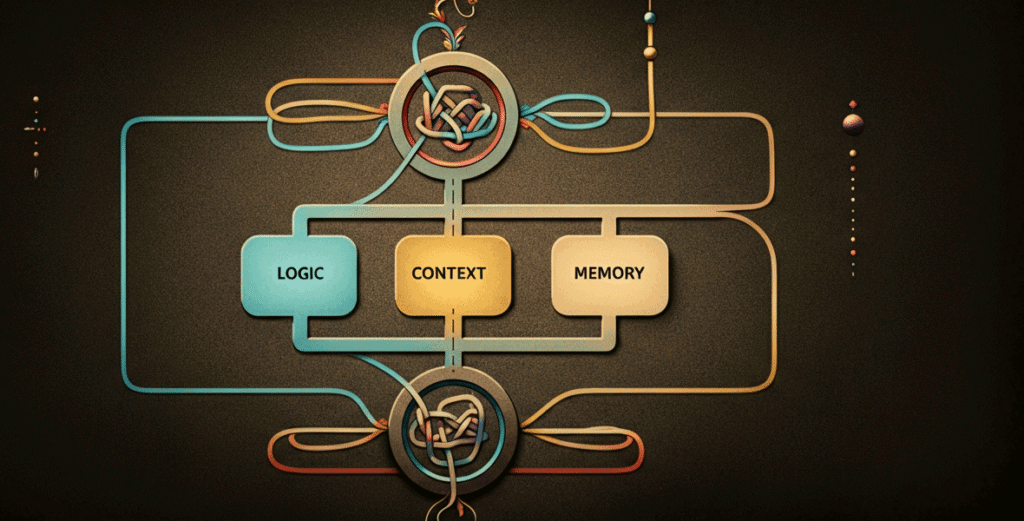
We ran tests and watched others perform logic puzzles, simple algorithms, and critical reasoning tasks. Apple’s own research team published results that cooled some of the hottest takes on large language models, showing that these models frequently fail at basic reasoning tasks. We saw similar things elsewhere—OpenAI’s high-profile releases that failed to meet expectations, user petitions asking for older versions back, and executives quietly admitting their models weren’t as robust as marketing promised.
-
Apple Watch Ultra 2 (GPS + LTE) 49MM Titanium Case Orange/Beige Trail Loop
— $479.95
$799.00 -
Apple iPhone 14 Pro Max 512GB Unlocked Very Good Condition
— $486.50
$1,399.00 - Open Box – Apple Watch Ultra 2 49mm Titanium Case Ocean Band – Orange – Grade A — $499.99
- Open Box – Apple Watch Ultra 2 49mm Titanium Case Alpine Loop Indigo – Grade A — $499.99
- Apple Watch Ultra 2 49mm GPS + Cell Titanium Case w/ M/L Blue Trail Loop — $509.00
The iPhone Air’s role in this ecosystem is subtle but important. A smartphone can be the vector for next-generation AI experiences—if that AI is believable and helpful. If, instead, the iPhone Air becomes the platform that hands off to inconsistent cloud models and forces users to choose between convenience and privacy, then it risks becoming emblematic of a transitional era where hardware looks great but the intelligence isn’t trustworthy.
🔁 Can Apple Turn Its Weaknesses Into Strengths?

We like to be optimistic. Apple possesses a unique array of assets, including vertical integration, a massive user base, strong brand loyalty, and billions in cash. If the company moves decisively, it can take advantage of its strengths. Here are the moves we think could help—and some that would undoubtedly be painful internally.
- Invest Like a Giant: Build or buy elite AI talent, and stop counting on occasional acquisitions. Competitive advantage in this field is both human and computational.
- Open Up the Right Amount: Publish research selectively and participate more visibly in the academic community. That will keep talent interested and show the world Apple isn’t just hiding behind secrecy.
- Own the Stack: Reduce reliance on third-party models for core experiences by accelerating internal model development or securing exclusive partnerships that align with Apple’s privacy narrative.
- Make Privacy Practical: Invest in differential privacy, secure enclaves, and model architectures that can run offline and still be useful. Then market those features not as PR smoke but as real user benefits.
-
Apple Watch Ultra 2 (GPS + LTE) 49MM Titanium Case Orange/Beige Trail Loop
— $479.95
$799.00 -
Apple iPhone 14 Pro Max 512GB Unlocked Very Good Condition
— $486.50
$1,399.00 - Open Box – Apple Watch Ultra 2 49mm Titanium Case Ocean Band – Orange – Grade A — $499.99
- Open Box – Apple Watch Ultra 2 49mm Titanium Case Alpine Loop Indigo – Grade A — $499.99
- Apple Watch Ultra 2 49mm GPS + Cell Titanium Case w/ M/L Blue Trail Loop — $509.00
🧭 What Users Want: Clarity, Not Hype

We talked to everyday users, not just analysts. They told us a few clear things: they want features that actually make life easier, they value privacy but not at the expense of basic functionality, and they prefer devices that are dependable rather than experimental. The iPhone Air is pretty, but aesthetic alone won’t solve those problems.
-
Apple Watch Ultra 2 (GPS + LTE) 49MM Titanium Case Orange/Beige Trail Loop
— $479.95
$799.00 -
Apple iPhone 14 Pro Max 512GB Unlocked Very Good Condition
— $486.50
$1,399.00 - Open Box – Apple Watch Ultra 2 49mm Titanium Case Ocean Band – Orange – Grade A — $499.99
- Open Box – Apple Watch Ultra 2 49mm Titanium Case Alpine Loop Indigo – Grade A — $499.99
- Apple Watch Ultra 2 49mm GPS + Cell Titanium Case w/ M/L Blue Trail Loop — $509.00
It’s easy to forget that a smartphone’s job is utility—communication, navigation, payment, and creativity. The era of “thin is better” is over if the thinness undercuts the device’s usefulness. We believe Apple should focus on features that enhance day-to-day life, rather than engineering spectacles that primarily impress reviewers at launch parties.
❓ FAQ: Questions We Keep Getting About the Phone Air and Apple’s AI
Q1: Is the iPhone Air a bad phone?
No. The iPhone Air is well-designed, thin, and feels premium. Our critique is about strategic context: it’s a refinement, not a leap.
Q2: Does Apple’s AI compromise privacy because it uses ChatGPT?
The integration raises legitimate questions. Apple claims privacy protections, but handing heavy lifting off to third parties weakens the company’s control over data flow and creates perception issues.
Q3: Are Apple’s AI features unusable?
Some features work well for lightweight tasks. Others—like deep conversational reasoning—still fall short. The experience is inconsistent.
Q4: Will Apple survive this AI era?
We think so. The company has resources and strategic options. The primary risk is complacency and failing to move quickly enough if the next significant wave of beneficial AI finally emerges.
Q5: Should we buy a iPhone Air?
If you value design and the Apple ecosystem, yes. If you want the absolute best AI features today, consider other options until Apple’s offerings mature.
🌀 The Broader Industry Story: A Gamble Everyone Is Making

One of the core themes we emphasized in our video—and expand on here—is that Apple’s problems are industry problems. Tech firms are collectively gambling on AI. Some are funded by venture capital optimism, others by advertising machines, and some by cloud partnerships. If AI ends up producing incremental value rather than radical transformation, then companies that overcommitted will face hard reckonings.
From the street-level perspective, we see a market recalibrating. Investors are rewarding companies that demonstrate sustainable paths to profit, not just rapid growth in user numbers. Apple’s conservative stance could be prudent if the AI hype inflates and then pops. But it could be dangerous if the technology proves transformative and Apple is too slow to catch up.
🔮 A Possible Future: Where Apple Wins Again
Imagine this scenario: the AI bubble cools, user expectations normalize, and a mature, predictable set of AI capabilities becomes table stakes. Apple spends the interlude refining models that run well on-device, builds trustworthy cloud fallback systems, and integrates those capabilities into a seamless experience across hardware. When the time is right, Apple launches a set of features that feel coherent, private, and genuinely useful—features that don’t carbon-copy the noisy chatbots of today but instead deeply enhance everyday tasks.
In that future, the iPhone Air becomes symbolic of Apple’s deliberate pace: not a failure, but a moment of quiet engineering that set the stage for a more meaningful renaissance. We think it’s possible—but it will require bold investment, cultural change, and a willingness to be public about progress.
🧭 The Trade-Offs We Can’t Ignore

We must be honest about trade-offs. If Apple accelerates to catch up in AI, it risks losing the polish and carefully controlled experience that defines its brand. If it stays cautious, it risks irrelevance in a world where software defines much of the user experience. These trade-offs are not merely technical; they cut to the heart of corporate identity, investor expectations, and cultural reputation.
We want Apple to succeed because when it does, it raises the bar for everyone. But our hope comes with a pragmatic view: Apple must reconcile its values with the realities of building massively capable AI systems. That reconciliation will be messy, public, and probably slow—but potentially worth it.
🎬 What Comes Next: Our Cliffhanger

We’re at a hinge point. The iPhone Air launch was not just a product release—it was a story beat in a longer narrative about whether one of the world’s biggest companies can reorient itself in the face of a technology that doesn’t care about brand legacy.
We’ve been testing, reporting, and talking to engineers and users. Our next installment will dig into the people behind Apple’s AI effort: the researchers who stayed, the ones who left, and the teams tasked with making privacy-compatible models that are actually useful. We’ll also do deeper hands-on comparisons between iPhone Air AI features and competitor offerings, and we’ll publish tests that simulate real-world daily usage over a seven-day period.
✅ Final Takeaways and a Call to Action
Let’s sum up plainly. We love design. We love craftsmanship. The phone air is a beautiful object. But a device’s beauty is only half the story. The other half is what it enables. Right now, Apple’s greatest asset—its obsessive focus on polished experiences—may also be a liability in a world rushing toward software-driven breakthroughs. The company must decide whether to keep playing defense with hardware refinements or to pivot, embrace risk, and aggressively build the AI stack it obviously needs.
We’re not rooting for failure; we’re asking for ambition. We want Apple to apply that legendary product rigor to AI, but do it fast. And we want them to be honest about their compromises. The iPhone Air can be a stepping stone or a symbol of missed opportunity. The next moves will tell us which it will be.
We would now love to hear from you. Try to imagine the phone in your life: Is thinness worth the extra cost of a battery purchase? Do you trust companies to handle AI with your data? Tell us and reach out—let’s keep this conversation going.
❓ FAQ: More Questions We’ve Answered in the Comments
Q1: Why does Apple use third-party AI?
Because for many advanced tasks, third-party models currently outperform Apple’s internal models. That’s a short-term performance answer, not a strategic endorsement.
Q2: Will the iPhone air break easier because it’s thin?
Thinness can increase fragility, but Apple’s materials and design choices mitigate those risks. Still, thinner phones historically react worse to drops and thermal stress.
Q3: Is Apple lying about privacy?
Not necessarily lying, but the legal and technical realities of AI training make absolute privacy claims difficult to prove without full transparency.
Q4: Should developers trust Apple Intelligence?
For simple tasks and integration with iOS features, yes. For heavy-duty model usage, many developers will prefer dedicated cloud services for now.
Q5: What’s our recommendation?
If you want a beautifully designed handset within the Apple ecosystem, the iPhone Air is a tempting option. If you need cutting-edge AI features today, consider other devices or wait for Apple’s next moves.
🚀 Closing Call to Action
We’ve laid out the issues, tested the device, and weighed the strategy. Now it’s your turn. Join the conversation: share this article, tell us your experiences with the iPhone Air, and subscribe to follow our upcoming deep dives into Apple’s AI team and the people building the next-generation user experiences. If you care about where tech is headed, don’t watch from the sidelines—engage.
We’ll be back soon with interviews, tests, and the inside story on whether Apple truly has a play for the AI future or whether the iPhone Air will become a neat-looking relic of a company that paused at the wrong moment.
Let’s keep asking the hard questions—together.
Great Choices
Genuine Leather Band iwatch Strap For Apple Watch Series Ultra 3 11 10 9 8 7 SE
Resources
Review: The new iPhone Air is the sexiest iPhone I’ve ever tested MashableiPhone Air Review: Durability Concerns Put to Rest cnet.comMy iPhone Air Review: Apple’s Most Interesting Phone Isn’t for Everyone PCMag
iPhone Air Review: A Compromise Worth Making (For Some) bgr.com
Never Mind the iPhone Pro: The iPhone 17 Is Probably All You Need cnet.com
iPhone Air review: Pointless until you actually hold it in your hand PhoneArena
Apple iPhone Air and iPhone 17 review: Apple’s strongest lineup in years Yahoo Finance
Apple iPhone 17 review: Sometimes boring is best Ars Technica
iPhone 17 Pro and Pro Max review: An impactful redesign Engadget
iPhone Air battery life tested — our results are in Tom’s Guide
I’ve reviewed every iPhone 17 model, and my advice is something different this year ZDNET
Apple’s iPhone 17 Line Wins By Returning the Focus to Hardware Bloomberg.com
Note: FriscoStore.com may get a small commission from this article, which supports us in giving the scope of great sellers and products and keeping you safe online when you shop for unique, quality items.










